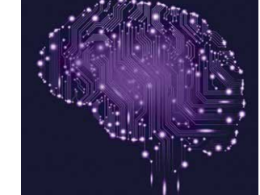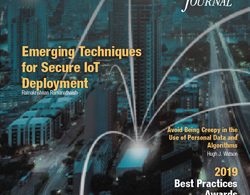The large data generating nature of autonomous vehicles poses many important challenges from data storage and data processing.
“It is estimated that a fully automated vehicle will be able to produce up to 3TB of data every day. This data includes many different classes of data such as video footage,sensor data, traffic data and Lidar data.”
The state of automotive transport is changing very rapidly due to the advent of a wide range of technologies. These technological changes include advances in fields such as data science, route optimisation and cloud computing. This article outlines the major techniques and questions that have emerged in recent years in the field of smart automotive systems. In particular, this article focusses on the self-driving cars and other related enabling fields. A smart automotive system is a system that uses technology to either aid a driver get to his / her destination in an efficient manner (partially autonomous cars) or relieves the driver of driving responsibilities completely and automatically transports all people in the vehicle to their destination (fully autonomous cars). Both types of smart autonomous vehicle use a wide variety of sensors to facilitate their respective operations and this tends to generate a lot of data which needs to be processed or stored. In the future, it is further envisioned that cars will be able to communicate with each other to transmit traffic related data and therefore cars may need to also store and process information that they may not have collected themselves.
The large data generating nature of autonomous vehicles poses many important challenges from data storage and data processing. It is estimated that a fully automated vehicle will be able to produce up to 3TB of data every day. This data includes many different classes of data such as video footage, sensor data, traffic data and Lidar data. This data would need to be filtered through (using data science techniques) and the important parts of it either stored in the car’s storage system of uploaded onto the cloud. If a car attempts to store all its data off-line then it will need a unrealistically large storage system to accommodate all the data and if a car uploads it’s information to the cloud then the car needs to have access to an adequately secure and fast data connection in order to be able support the data connection needs. This is the big cloud computing challenge being put forward by smart automotive systems.
Emerging frameworks that could enable autonomous vehicles to efficiently access the cloud mainly comprise of vehicles accessing cloud services through some Software-As-A-Service (SaaS) based platform. This comprises vehicles subscribing to some software based autonomous assistance service which is based in the cloud. The purpose of the cloud software platform would be receiving, storing and sending information to each vehicle. This is an evolution to the current subscription-based service models currently being used today such as OnStar. Due to the fact that the cloud platform receives different data from a wide variety of different parties, it can aggregate the data it receives and use data science centric techniques to extract network wide information which it would then forward to the vehicles. In order to facilitate the communication between vehicles and the cloud, there needs to be new infrastructure put in place to ensure that cars are always connected. This infrastructure should facilitate both Vehicle to Cloud (V2C) communication and Vehicle to Vehicle (V2V) communication.
Technologies such as 5G are enabling technologies for V2V and V2C communication to be possible. This is because 5G technologies are both low latency and high bandwidth and can thus be used in autonomous driving scenarios. These are coupled with cloud based autonomous applications which might be provided as a SaaS using technologies such as OpenStack. OpenStack is a free and open source cloud platform which can use to deploy SaaS based software. It is emerging as the most prominent manner in which SaaS applications are deployed in modern scenarios and has gained a very wide user base.
In order to facilitate the communication between vehicles and the cloud, there needs to be new infrastructure put in place to ensure that cars are always connected.
The general framework to successfully cater for the low latency needs of smart automotive networks is to divide the cloud into two distinctive sections. There is one cloud which is physically located on infrastruc-
“Emerging frameworks that could enable autonomous vehicles to efficiently access the cloud mainly comprise of vehicles accessing cloud services through some SoftwareAs-A-Service (SaaS) based platform.
ture near the actual transport network which is called the Edge cloud and then there is another cloud service which is running on a remotely located data centre. Vehicles communicate wireless with each other and the EDGE cloud and the EDGE cloud aggregates data and sends it both to the remote cloud and also back to the vehicles.
The goal of the EDGE cloud is to ensure that low latency processing can be quickly conducted and then sent back to the vehicles. This processing could include notifying cars of imminent slowdowns in traffic flow, up-to-date best route data etc. The vehicle can then take that use that information to ascertain the best route to take when getting to its destination, or to avoid any obstacles which may have suddenly arisen on the road. This information could have been gained for the edge cloud from other vehicles and then passed on to other vehicles on the road. The information can then be further aggregated and passed onto the remote cloud where network wide information is stored and analysed.
At the remote cloud, the key goal is to perform network wide, real-time analytics. This required the remotely located cloud to run vehicular applications on a high-speed cloud platform such as OpenStack. The OpenStack based solution could run on a host platform such as Rackspace Cloud or DigitalOcean. The requirement of having a separate edge cloud place significant infrastructure challenges for governments worldwide who will need to invest a lot in transport infrastructure in order to get it ready for use by partially and fully automated vehicles.
Vehicles collect a wide variety of sensor information such positional data, LIDAR data and camera data from a wide variety of devices. This data can swell upwards of 1TB a day in some autonomous vehicle implementations. Data collected from vehicles and reaching the EDGE cloud infrastructure is thus massive and needs Big Data based methodology to assess and process it. This can be done on the EDGE cloud infrastructure using big data processing technologies such as HADOOP and R. HADOOP is a software framework that has been specifically optimised for handling and processing big data.
Once algorithms and required aggregation has been conducted on the data, the aggregated data is then passed onto the remote cloud application via some communication protocol. This data is then used either for further analytics or for monitoring purposes. The monitoring in particular is commonly done with software libraries such as Prometheus and using some time series database such as InfluxDB. If the remote clouds analytic engine wants to continuously monitor some attribute of some vehicle, such as change mean velocity, it subscribes to receive mean velocity data from the EDGE cloud and doing that will enable it to routinely receive the relevant data from the EDGE.
In summary, a lot of research has been conducted in smart automotive systems and we are a point now where the particular framework that would enable autonomous vehicles to be realised is a cloud based frame work. This cloud framework would be composed of an edge framework which processes low latency data on the traffic network and a remote cloud which receives network wide information and performs network wide analytics.
Emerging Techniques In Smart Automotive System











